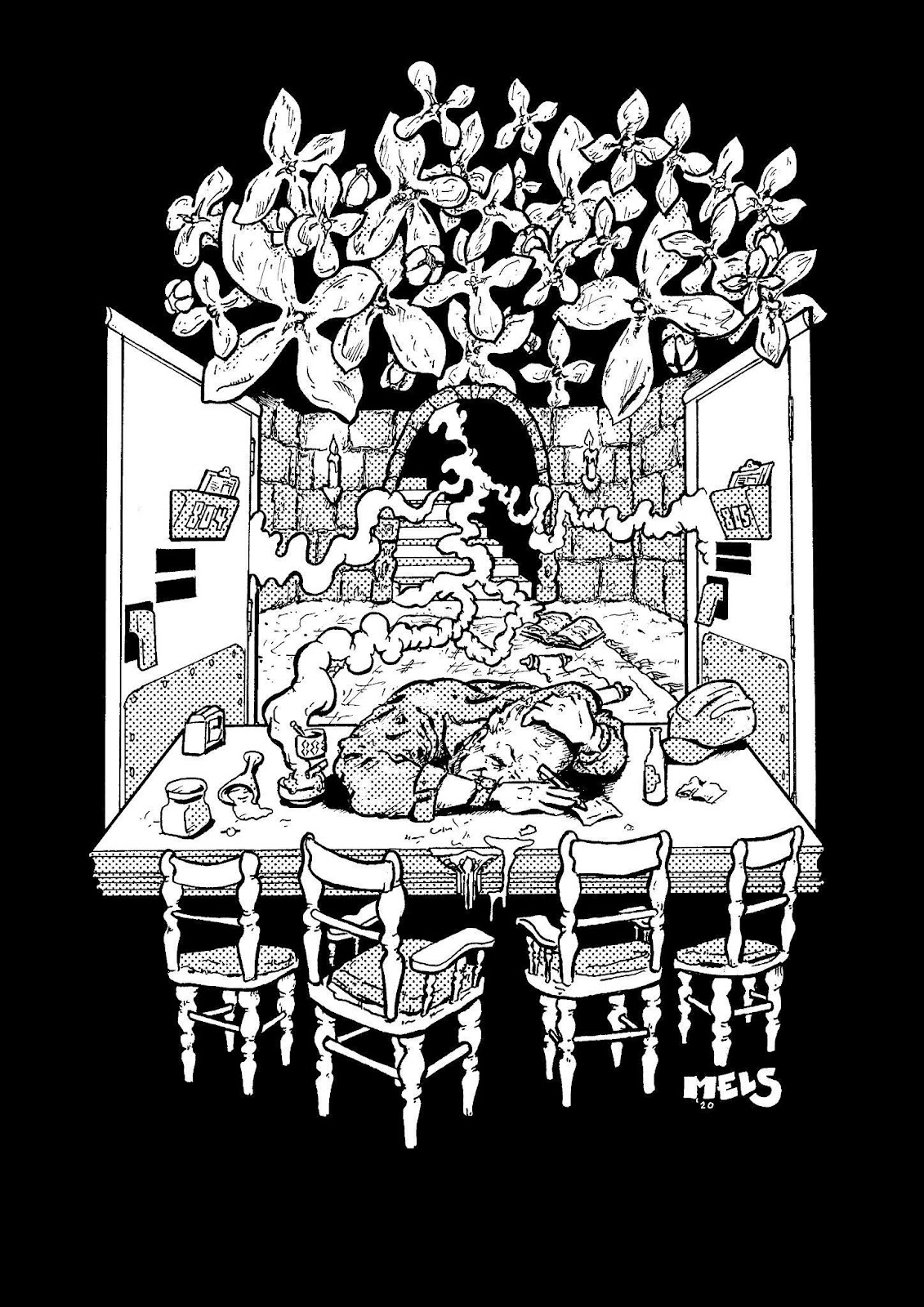3 Questions
What was your process for creating this work?
Kenneth: These two poems come from a forthcoming collection called Macabra. The collection is filled with companion poems that offer multiple perspectives of one experience or perception that permeate in close communities. So the process involved cutting lines that drifted too far from the immediate location in order—to hopefully—heighten a sense of intimacy and plain-spokeness.
Mels: I initially read Kenneth's poems dividing them into any direct visual descriptions and feelings they provoked. I then attempted to manipulate the provided imagery to convey those sentiments. The result is often surreal in the original sense of the word, portraying both external reality and inner thought as one.
What is the significance of the form/medium you chose?
Kenneth: For me, poetry is a way to distill everyday life into clarity and song.
Mels: Comic illustration is often consumed without challenge, so it's the perfect medium to make difficult subject matter from the poetry accessible and easy to absorb. Gradient-free, black and white, pen and ink images are cut, dry, and solid. They are highly present and meant to reflect words on a page, contrasting and strong.
What is the significance of this work to you?
Kenneth: There is great significance in this work for me since it springs from my time as a member of the last Free People’s Poetry Workshop led by Poet Etheridge Knight in Indianapolis, Indiana from 1989 to Etheridge’s death on March 10th, 1991. The poems are a composite of various events and individuals, and the Chatterbox is a real jazz club in Indianapolis where all of us Free People’s poets used to hang out with Etheridge. I learned a lot about jazz there. Poetry, too.
Mels: I was able to plug into my own dealings with death, loss, thoughts on the afterlife, ambition, dreams, loneliness, and struggle. Although the words aren't mine, boiling them down to symbolic artwork was very personal.
Kenneth May, originally from Indianapolis, Indiana, lives in Busan, South Korea, where he is the founder and creative director of the Liquid Arts Network, an art collective that presents art, supports artists, and connects communities in South Korea, Asia, and beyond. The poems included here are from his forthcoming collection Macabra.
Mels is a Wyoming-born artist from the coal mining town of Rock Springs. He currently lives and works in Busan, South Korea. He’s a cartoonist whose artwork orbits satire, sexuality, ugliness, the paranormal and occult. He uses comic illustration to make subversive and challenging topics easily consumable and discussable.
